1. Red Rover
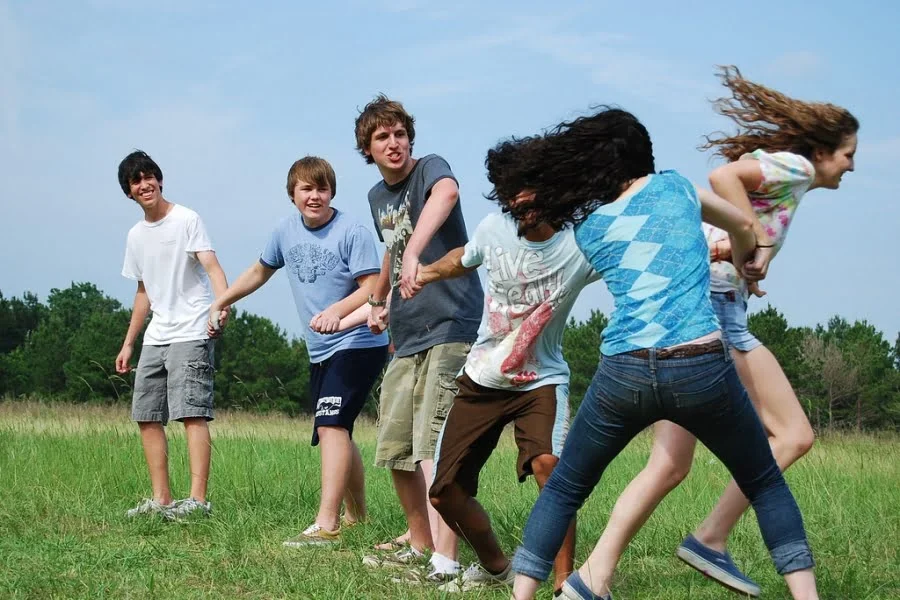
Red Rover was one of those games that looked harmless at first glance but always ended with someone getting knocked flat on the grass. Two lines of kids would hold hands and call over a player from the other side, daring them to run full speed and break through. If they succeeded, they took someone back to their team. If they failed, they got stuck where they landed.
It was simple, loud, and surprisingly competitive. The thrill came from both the sprint and the crash, like an organized form of chaos on the playground. Teachers often tried to ban it because of the bruises and scraped knees, but that only made kids want to play more. It was the kind of rough-and-tumble fun that felt like pure freedom back then.
2. Chinese Jump Rope
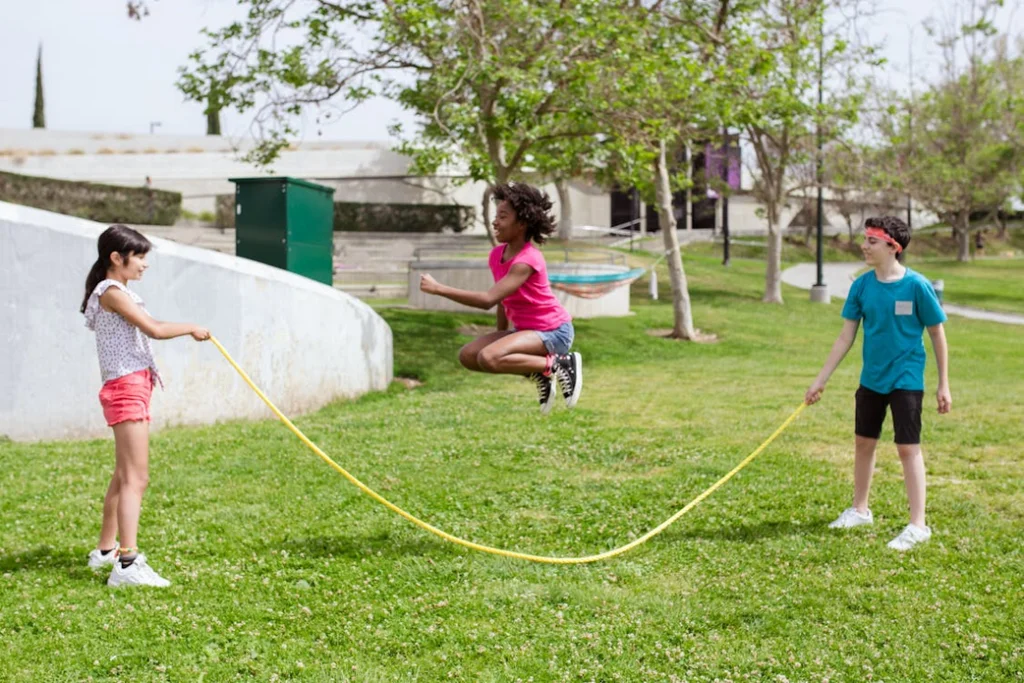
Chinese Jump Rope looked like a mix between hopscotch and double dutch, but it was played with a stretchy loop of elastic instead of rope. Two kids would stand with the elastic stretched around their ankles while another jumped in, out, and across in a set pattern. The levels got harder as the elastic moved higher, from knees to waist.
It required rhythm, balance, and a lot of giggling when someone tripped up. The patterns were often chanted as the jumper moved, turning the whole thing into a sing-song performance. It was especially popular with kids who wanted a game that didn’t require running or tackling. Even now, people can probably remember the feel of the elastic snapping against their legs.
3. Four Square
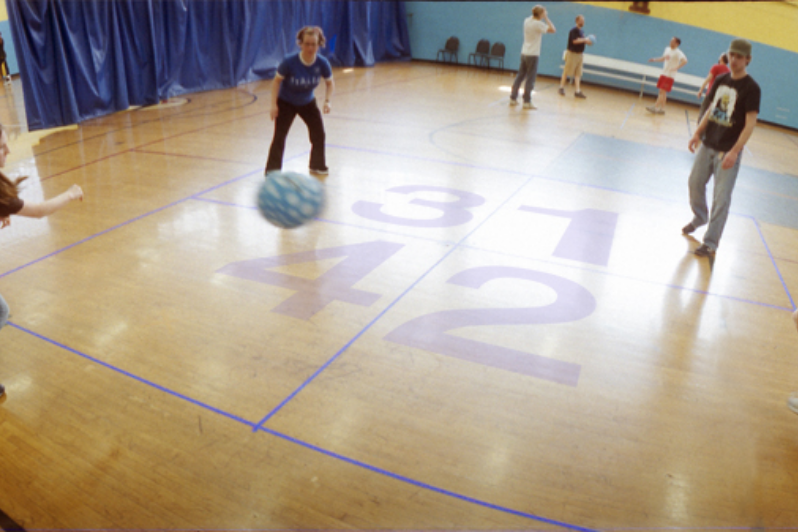
Four Square was like playground royalty in the ’80s. All you needed was a ball and a square divided into four smaller sections, usually drawn with chalk or faded paint on blacktop. The goal was to bounce the ball into another square without letting it leave yours, climbing your way up to the coveted “king” square.
There were always arguments about rules, like whether “double taps” or “cherry bombs” were allowed. But the real fun came from the fast pace and the challenge of staying in as long as possible. It was one of the few games that kids of all ages could play together. Recess often revolved around who could hold onto that top square until the bell rang.
4. Mumblety-peg
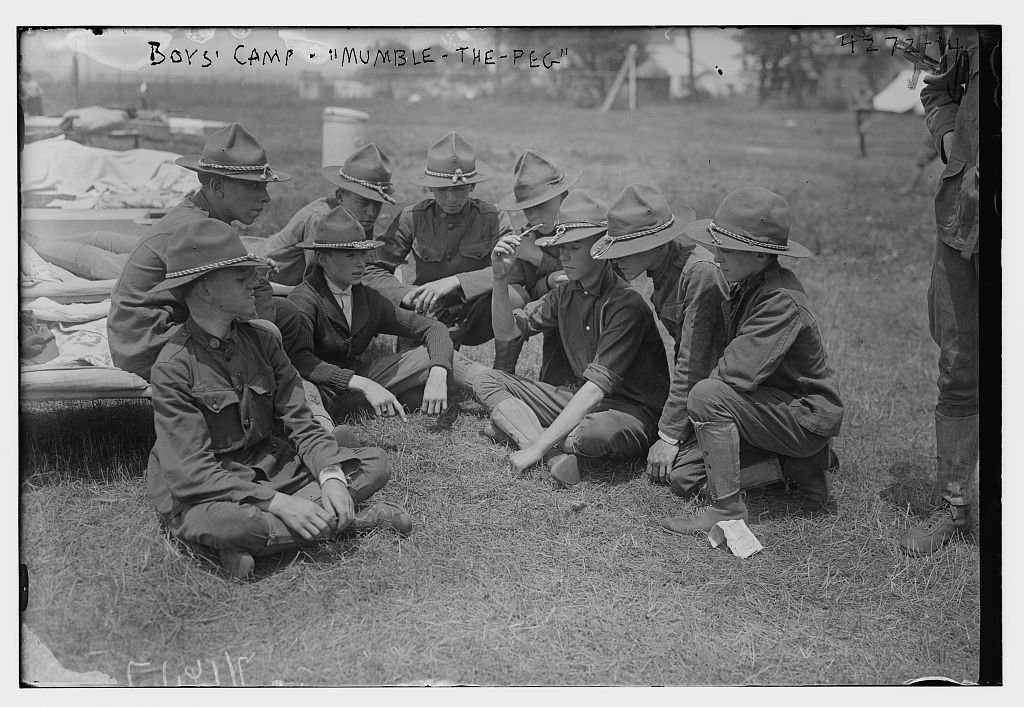
Though it sounds like something from much earlier, this knife-tossing game made its way into the ’80s thanks to older brothers and adventurous kids. The basic idea was to flip a pocketknife into the ground, with different tricks earning points. Sometimes it was just about accuracy, and other times it was about daring stunts.
While it wasn’t officially playground-approved, some kids pulled it out at the edges of schoolyards or after school. Teachers didn’t love the idea of sharp blades flying around, but that rebelliousness was part of the appeal. It was equal parts risky and impressive. Looking back, it’s amazing how casually dangerous it really was.
5. Double Dutch
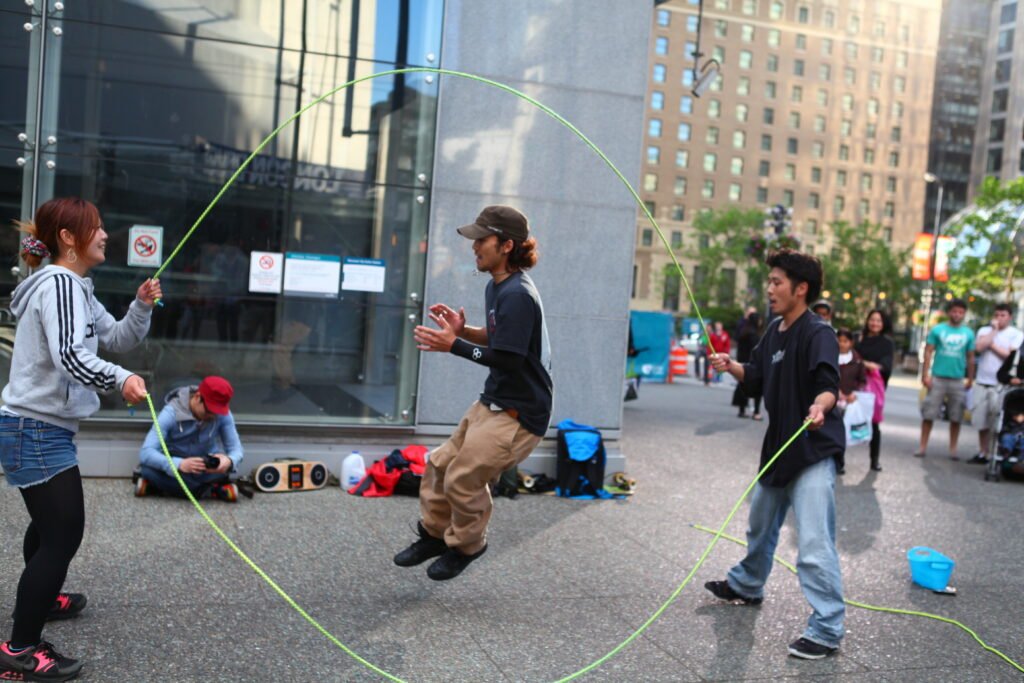
Double Dutch wasn’t just a game, it was almost an art form in the ’80s. With two ropes turning in opposite directions, kids would hop in and start jumping to the beat. Those who could add tricks like clapping, crossing arms, or even rapping while they jumped earned instant playground respect.
It was especially popular at recess and after school, sometimes drawing big crowds of kids who wanted to watch. There was a rhythm to it that made it feel almost like a dance. The ropes would slap the pavement in time with the jumpers’ feet, creating a soundtrack that everyone could hear across the yard. It was both fun and hypnotic.
6. Kick the Can
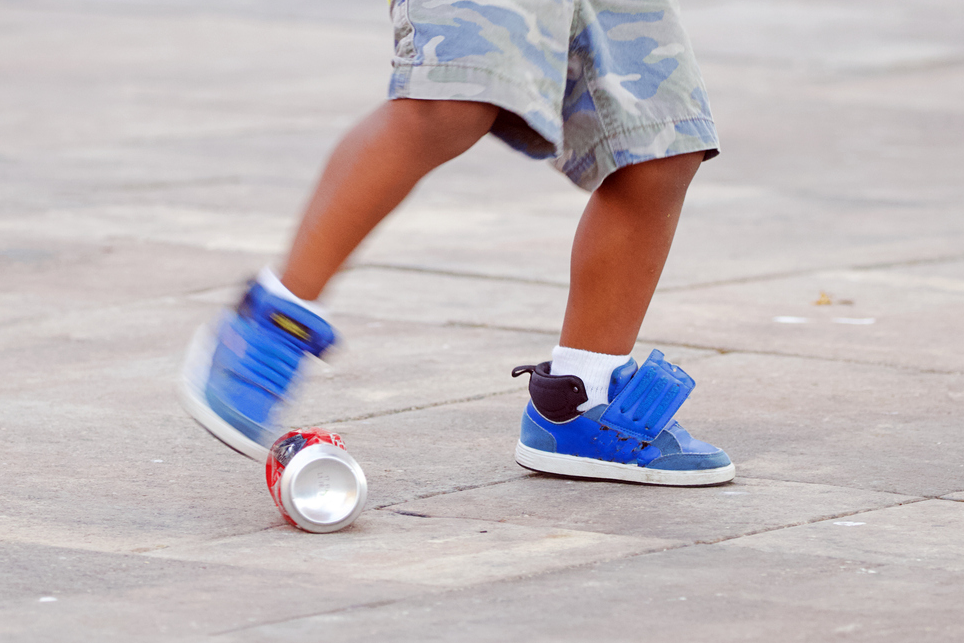
Kick the Can was a mash-up of hide-and-seek and tag, with a can sitting in the middle of the yard as the prize. One kid was “it,” and the rest had to hide. If they were spotted, they could be locked up, but if someone else snuck in and kicked the can, everyone was free again.
The game could go on forever, especially when kids found clever hiding spots. The can itself often clanged across the pavement, echoing loud enough to make everyone scatter. It combined sneaky strategy with bursts of energy, making it exciting no matter what role you played. It was the perfect game to stretch out an afternoon.
7. Wall Ball
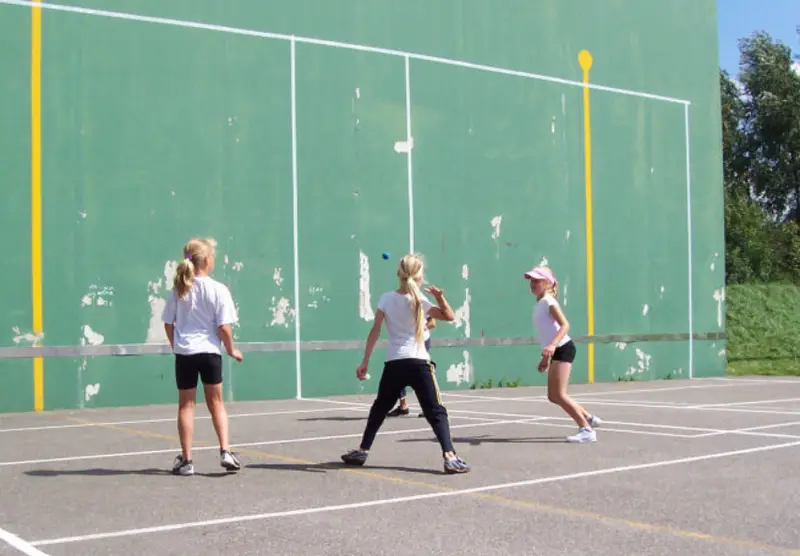
Wall Ball was as simple as throwing a ball against a wall, but kids turned it into something much more competitive. If you missed catching the rebound, you had to race to the wall before someone else pegged the ball at it. If they beat you to it, you’d be “out” or get a playful penalty depending on the rules of the day.
The beauty of Wall Ball was how endlessly adaptable it was. Different groups had their own spins on the rules, which made it fresh every time. All you needed was a wall, a ball, and kids who wanted to burn off energy. It was the go-to game when everything else got boring.
8. Duck on a Rock

This old-school game popped up now and then in the ’80s, especially if kids found the right setup. One rock or object sat on a larger surface, while players stood at a distance and tried to knock it off with their own stones. The person guarding the “duck” had to tag kids who came too close while retrieving their rocks.
It was a blend of aim, patience, and strategy, which made it surprisingly engaging. There was always tension between waiting for the perfect throw and sprinting in to rescue your rock. While not as common as tag or Four Square, it was memorable for those who played it. It also had that rustic charm of using whatever was lying around.
9. Marbles

By the ’80s, marbles weren’t as trendy as they had been in earlier decades, but plenty of kids still carried them around. The goal was to shoot your marble and knock others out of a circle drawn in dirt or chalk. Winners usually got to keep the marbles they claimed, which made the stakes feel higher.
There was something special about the marbles themselves too. Swirls of color, clear glass, or cat’s-eye designs made them treasures as much as toys. Kids would trade them, brag about their favorites, and carry them in pockets like prized possessions. It was part collection, part competition, and part playground currency.
10. Sardines

Sardines flipped hide-and-seek on its head. Instead of one person being “it,” everyone else was the seeker. The first person to find the hider had to squeeze into the same hiding spot with them, like packed sardines. Eventually, the last seeker would stumble upon the whole group crammed into one spot.
It was hilarious and slightly claustrophobic, especially when kids tried to stay quiet while crammed in bushes or closets. The more people squeezed in, the harder it was not to giggle. It was less about winning and more about the absurdity of the situation. By the end, everyone was laughing too hard to keep hiding anyway.
11. Spud

Spud was a mix of tag, dodgeball, and a little luck. Each player had a number, and when “it” tossed the ball in the air and called a number, that player had to catch it. Everyone else ran away, but once the ball was caught, the catcher shouted “Spud!” and everyone had to freeze.
The catcher then got four steps to try to hit someone with the ball. If they succeeded, that person took a letter in “SPUD,” and once you spelled it out, you were out of the game. It was suspenseful, especially when you were the one being aimed at. The game blended silliness with just enough tension to keep everyone hooked.
12. Capture the Flag
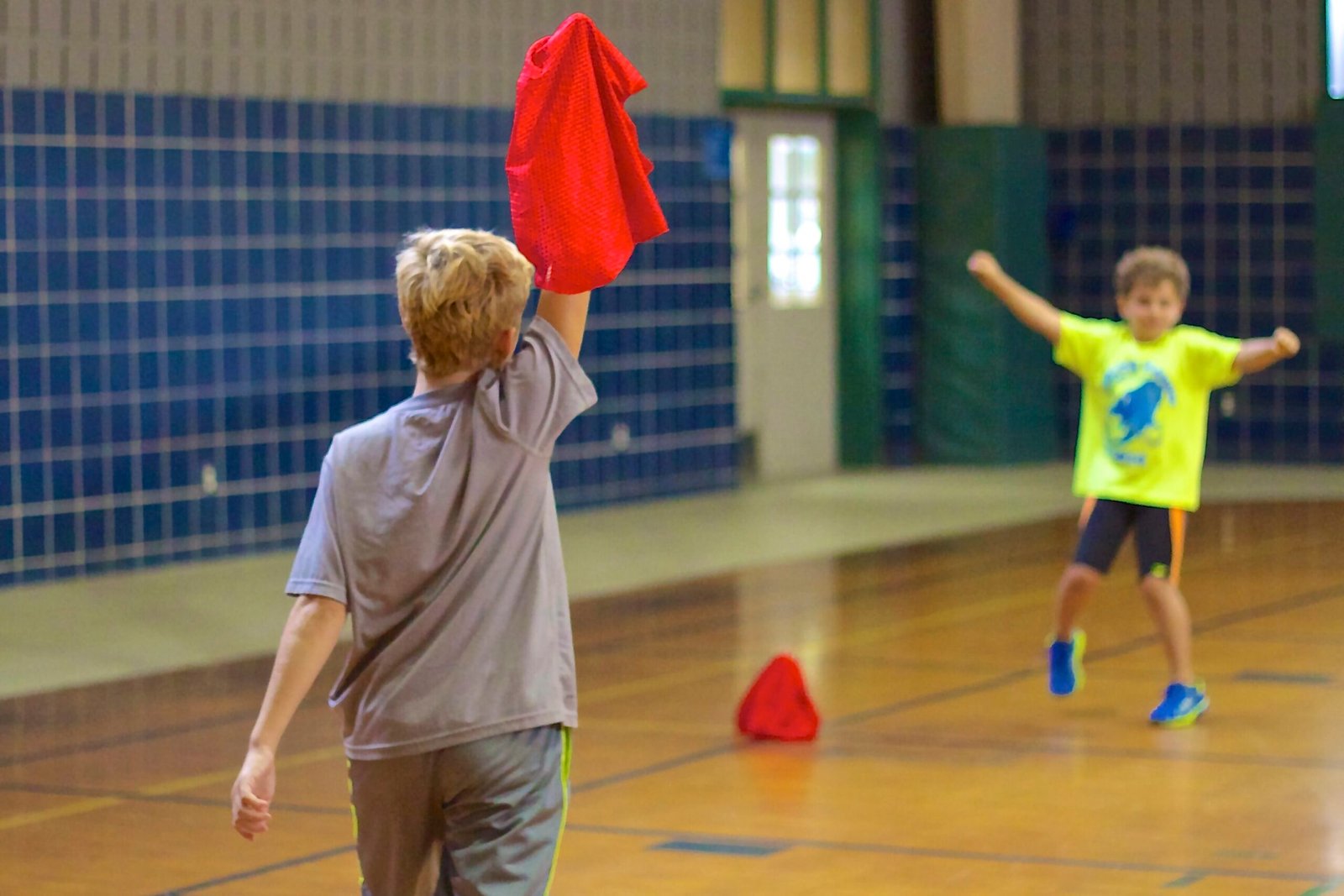
Capture the Flag felt like the ultimate big-kid game. The playground would split into two territories, each with a flag or marker hidden somewhere. The goal was to sneak into the other team’s side, grab their flag, and bring it back without getting tagged.
It was all about teamwork, strategy, and a little bit of daring. Kids would argue over boundaries and rules, but that was part of the charm. The game could stretch across fields, playgrounds, or even entire neighborhoods. It made kids feel like they were part of a secret mission, and that sense of adventure is what made it unforgettable.


